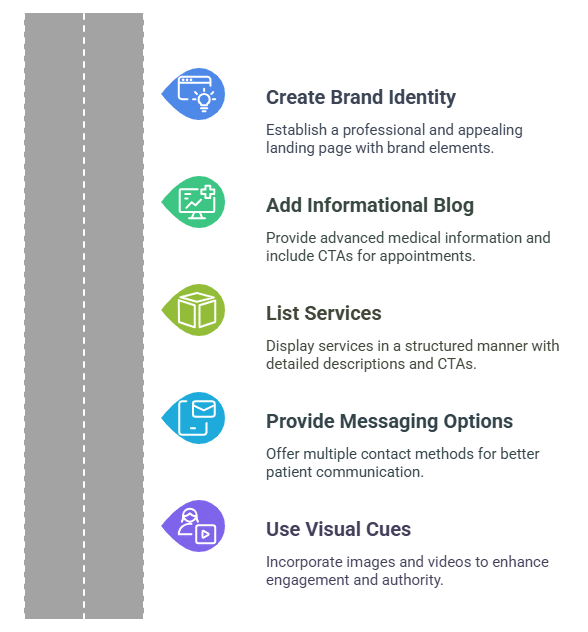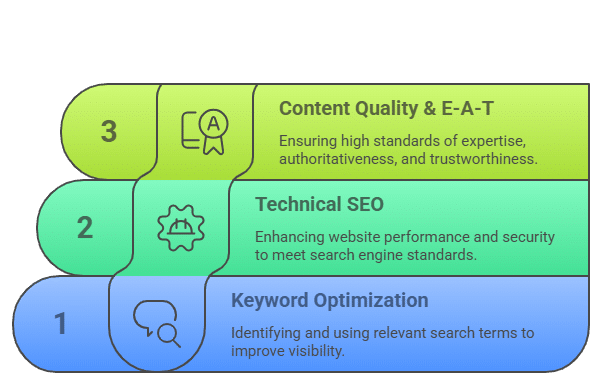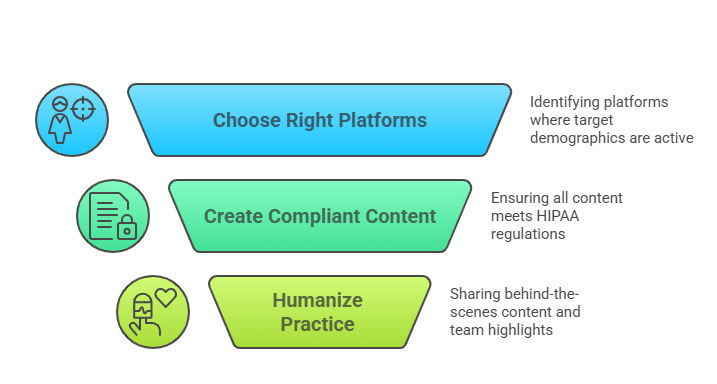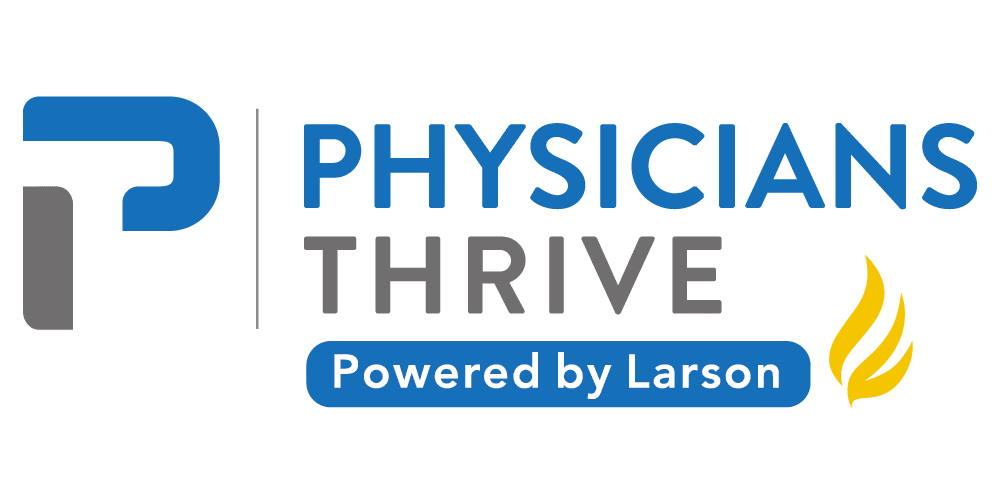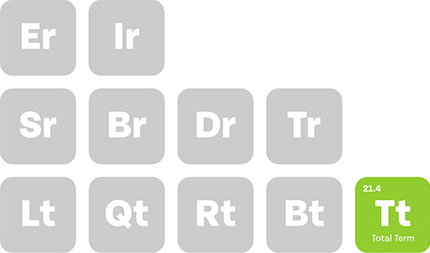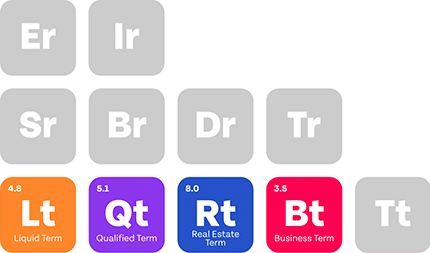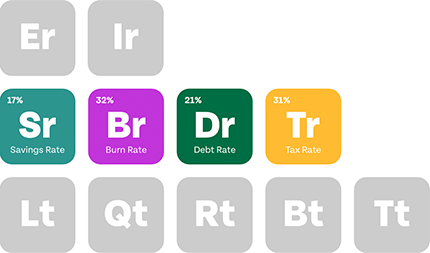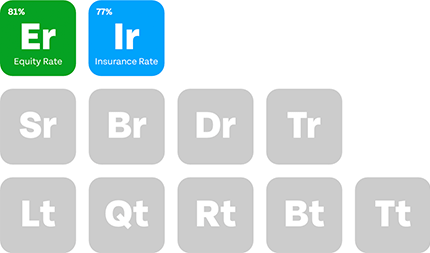Healthcare marketing isn’t as straightforward as marketing in other industries. It’s easy to attract people by showcasing a shiny product, but you can’t attract patients the same way.
Plus, healthcare professionals offer numerous services, each requiring a dedicated marketing plan tailored to showcase specific expertise online.
This “digital marketing for doctors” guide will give you valuable tips on how you can professionally improve your online visibility while making it appealing to people.
Key Takeaways
- Digital marketing is essential for doctors to attract and retain patients online.
- A professional website with SEO and blog content builds trust and visibility.
- Google Business Profile boosts local presence and patient credibility effectively.
- Social media platforms help humanize practices and increase patient engagement.
Table of Contents
Why Should You Invest in Digital Marketing?
Because your business will fail without it, the answer really is that bold.
You may or may not know that the United States was short 60,000+ physicians by the end of 2024. Some physicians might mistakenly believe the physician shortage means they don’t need to invest in digital marketing.
The truth is that it can and will shut down their business if they’re not careful. The country may have fewer healthcare providers than it needs, but you and your peers are still competing for the same target audience.
If you don’t invest enough in the digital aspect to attract them, someone else will steal them from you. That’s because 97% of people check a company’s website before deciding to visit the physical location, and that applies to medical practices, too.
If potential patients can’t find your website (or find it underwhelming or untrustworthy), your practice will suffer.
In short, traditional word-of-mouth advertising and excellent medical skills alone are no longer enough for healthcare providers to grow their practices. You have to showcase what you can do to your target audience.
With the average American spending 7+ hours online, the biggest portal to showcase your business has become digital marketing.
Digital Marketing Strategies for Doctors: How to Do it Properly
You’ll stumble upon various guides online telling you to focus on a specific aspect, such as video ads, email marketing, SEO, and so on. The reality is that you need a comprehensive, systematic approach from the beginning.
Step 1: Your Local Business on Google
Your first step is to ensure your GBP ( Google Business Profile) is listed, claimed, and verified on Google. Your GBP is how Google lists your physical address, information, rating (out of 5 stars), and contact information to those who look for you.
If your business has already been around for a while, you’ll likely find that your business is already listed on Google. If not, you’ll have to create the listing yourself.
Either way, you need to verify that this business belongs to you, and that’s by “claiming” the business.
The steps to do so are self-explanatory on Google, and you should expect an identity verification call from a Google employee before your medical practice receives its verification badge.
Once you get the badge, you have to fill your GBP with:
- Pictures of your practice
- Useful blog posts
- Honest customer reviews
You should also respond to any reviews that have questions, inquiries, or feedback. This can give huge credibility to your listing.
Step 2: Build Up Your Website
If your GBP is one side of the coin, your website will be the other. We won’t get into the technicalities of how to create a website, but we’ll show you how to let people know that your website is there and how to keep them there long enough for them to make an appointment.
1. Create Your Brand Identity
First impressions matter, even in the medical industry. Your website’s landing page should be professional-looking, and that involves showcasing your:
- Brand logo
- Brand information (a well-detailed about us section for authority)
- Contact information
- Any positive statistics, awards, or badges earned
- Positive patient reviews
You should also choose a professional color palette. Have you noticed how luxury websites somehow make you feel like you’re browsing a fancy store instead of just another random URL?
That’s the power of colors. Many people dismiss this, but having a suitable color palette can make a world of difference.
2. Have an Informational Blog Section
The internet has made it easier than ever for people to know more about diseases, differential diagnoses, drugs, and more.
You’ll have many patients walking into your clinic expecting a certain diagnosis and only coming to seek confirmation. They may even talk back in medical terminology that you use among your colleagues.
These people’s search history will look more like “the difference between type I and type II diabetes” than “do I have diabetes.”
Accordingly, your blog should have the advanced information that such potential patients are looking for, followed by an easy-to-use CTA ( call to action) in the end to help them make an appointment quickly.
3. Provide a List of Services
Each service you provide must be shown on your website, preferably in a drop-down tab. Each service should open into a new page showcasing the type of service, what’s normally provided through that service, and how your practice does it better.
Once again, in each of those pages, you must skillfully place a CTA near the end to help convince patients to reach out to you quickly.
4. Provide a Messaging Section
Contact through email is the standard method on many websites, but you can take this a step further by providing a phone number or a chat section.
You may already have an FAQ section, but that doesn’t always answer everyone’s queries, and a direct contact method like calling or chatting can bridge such a gap.
Plus, the questions you receive in such contact gates will help you listen to real-time queries and feedback to help you improve your FAQs section and more.
5. Use Visual Cues
Images and videos are much easier to process by the human eye, and they are excellent reliefs for those who struggle to keep up with large texts.
Having visual cues like videos on landing pages can increase your conversion rates by up to 80%. If your homepage has videos of you or your colleagues speaking professionally about your business, you’ll convey a sense of safety and authority to your website visitors.
Step 3: Adhere to SEO Standards
SEO (Search Engine Optimization) has become the bread and butter of online presence. With over 31,000 clinics in the United States, you have to give Google a reason to pick yours when it shows its results, and that’s SEO.
We’ll go ahead and say it: SEO is a long-term game that needs you to be patient and be able to tick all the boxes. It simply won’t happen overnight.
That being said, here are the boxes you should tick:
1. Keyword Optimization
Keyword optimization is having the right keywords that people search for. In the medical field, people often ask questions like: “Why are my ears ringing?” or “ Why does my jaw hurt in the morning?”
You can use many tools to search for effective keywords among your competitors, like Neuron Writer, Market Muse, and Clearscope.
Once you get these keywords, you need to smartly distribute them among your content, whether it’s text, audio, or video.
By “smartly,” we mean using them whenever relevant. For example, You can ask, “Why Are My Ears Ringing?” as an article title or heading and provide an answer immediately after. This helps Google to fetch your website whenever someone searches for that term.
Just be careful not to sacrifice readability for the sake of keywords ( keyword stuffing), or Google will label your website as “unhelpful” and drop its ranking.
2. Technical SEO Optimization
Keyword research is mandatory, but it shouldn’t be your sole purpose. The technical aspects of your website can make or break your SEO success.
Search engines prioritize websites that load quickly, function properly across all devices, and provide secure browsing experiences.
Accordingly, ensure that your website has:
- HTTPS encryption for security (critical for medical websites handling sensitive information)
- Mobile responsiveness for seamless viewing on smartphones and tablets
- Fast loading times (ideally under three seconds)
- Alt text for all images to improve accessibility and SEO
- A sitemap that helps search engines understand your website structure
For medical practices specifically, you need to implement a health schema markup, which can significantly improve how search engines interpret your content.
Medical-specific schema can highlight your practice’s specialties, physicians’ credentials, accepted insurance, and patient reviews directly in search results.
3. Content Quality and E-A-T
In 2025, Google’s focus on E-A-T (Expertise, Authoritativeness, Trustworthiness) has become more important than ever, especially for medical websites classified as YMYL(Your Money, Your Life).
Since healthcare information directly impacts people’s well-being, search engines hold medical content to higher standards.
To showcase that your website is up to such standards, your website should:
- Have content written or reviewed by qualified medical professionals
- Include author credentials and bios for all medical content
- Link to reputable sources when making medical claims
- Keep content updated with the latest medical information
- Address common patient questions thoroughly and accurately
- Provide clear disclaimers about medical advice vs. information
Step 4: Social Media Marketing
American teenagers alone spend an average of nearly 4 hours per day just on social media, giving you a massive exposure gate that you can utilize. Popular websites like Facebook, YouTube, TikTok, and Instagram can yield a lot more return on investment than you think.
These results are outliers, so take them with caution, but some studies report up to 250% ROI on social media campaigns. This means a $1,000 investment could potentially return $2,500, resulting in $1,500 profit.
Here’s how you can properly push your practice in a rather crowded online market:
1. Choose the Right Platforms
Not all social media platforms will yield the same results for your medical practice, at least not through the same type of content. Accordingly, you should focus your efforts on platforms where your target demographic is most active. Here’s how:
- Facebook: Excellent for general practice information, patient testimonials, and community engagement.
- Instagram: Perfect for visual storytelling and showcasing your facility, introducing staff members, and sharing educational graphics about common health conditions.
- YouTube: Ideal for detailed educational content, procedure explanations, and patient testimonials.
- TikTok: It may be newer to healthcare marketing, but short-form videos can help reach an audience with quick health tips and medical myth-busting. Short-form videos can take your marketing to the next level; the average adult’s “interest span” is around 8.25 seconds.
- LinkedIn: While it’s not a direct gate for potential new patients, it’s fantastic for B2B networking and physician recruitment.
Related: A Comprehensive Guide To Winning More Business and Views From Your LinkedIn Profile
2. Create HIPAA-Compliant Content
The healthcare industry has far stricter privacy regulations for marketing compared to other industries.
For example, Facebook might reject your ad if it contains before-and-after photos that the platform considers “demeaning to people.”
Accordingly, you should always:
- Obtain written consent before sharing any patient stories or testimonials
- Avoid sharing any identifiable patient information
- Use stock photos or actors when depicting medical scenarios
3. Humanize Your Practice
Social media provides an excellent opportunity to showcase the human side of an industry often perceived as strictly professional.
One of the best methods to do so is by sharing some behind-the-scenes glimpses (or even bloopers) of your practice. You can also spotlight team members with brief bios and interesting facts and even celebrate their achievements and milestones.
In short, most people use social media to be entertained. If your medical content doesn’t have the entertainment element, it’ll be skipped. Provide some entertainment value without dismissing your professionalism, and you’ll be good to go.
Become the Best by Working With the Best
As you can see, it’s no exaggeration to say that social media content marketing is an ocean of highly variable content. Even with reading and studying your fair share of online guides, you’re bound to make some costly mistakes at the start of your digital marketing journey.
However, that doesn’t always have to be the case. At Physicians Thrive, we have medical experts who were in your shoes at one point. Contact us for complete financial advisory services, and we’ll show you exactly what to do
Keep reading –> The Ultimate Guide to Social Media for Doctors in 2025

